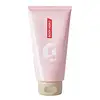What's inside
What's inside
 Key Ingredients
Key Ingredients

 Benefits
Benefits

 Concerns
Concerns

 Ingredients Side-by-side
Ingredients Side-by-side

Water
Skin ConditioningDimethicone
EmollientNeopentyl Glycol Diheptanoate
EmollientIsononyl Isononanoate
EmollientCetearyl Alcohol
EmollientButylene Glycol
HumectantPropanediol
SolventGlycerin
HumectantOlea Europaea Fruit Oil
MaskingPEG-40 Hydrogenated Castor Oil
EmulsifyingButyrospermum Parkii Butter
Skin ConditioningHydrogenated Olive Oil
Skin ConditioningOlea Europaea Oil Unsaponifiables
Skin ConditioningMica
Cosmetic ColorantEvodia Rutaecarpa Fruit Extract
Skin ConditioningTamarindus Indica Fruit Extract
Skin ConditioningAlaria Esculenta Extract
Skin ProtectingCereus Grandiflorus Flower Extract
Skin ConditioningOpuntia Tuna Flower/Stem Extract
Skin ConditioningYucca Schidigera Leaf/Root/Stem Extract
CleansingCetearyl Glucoside
EmulsifyingCaprylyl Glycol
EmollientCaprylic/Capric Triglyceride
MaskingPotassium Cetyl Phosphate
EmulsifyingSodium Polyacrylate
AbsorbentHydrogenated Polydecene
EmollientCaprylhydroxamic Acid
Xanthan Gum
EmulsifyingSodium Hydroxide
BufferingPPG-5-Laureth-5
EmollientCitric Acid
BufferingTin Oxide
AbrasiveAcrylates/C10-30 Alkyl Acrylate Crosspolymer
Emulsion StabilisingParfum
MaskingLinalool
PerfumingCitronellol
PerfumingGeraniol
PerfumingHydroxycitronellal
PerfumingLimonene
PerfumingCI 77891
Cosmetic ColorantWater, Dimethicone, Neopentyl Glycol Diheptanoate, Isononyl Isononanoate, Cetearyl Alcohol, Butylene Glycol, Propanediol, Glycerin, Olea Europaea Fruit Oil, PEG-40 Hydrogenated Castor Oil, Butyrospermum Parkii Butter, Hydrogenated Olive Oil, Olea Europaea Oil Unsaponifiables, Mica, Evodia Rutaecarpa Fruit Extract, Tamarindus Indica Fruit Extract, Alaria Esculenta Extract, Cereus Grandiflorus Flower Extract, Opuntia Tuna Flower/Stem Extract, Yucca Schidigera Leaf/Root/Stem Extract, Cetearyl Glucoside, Caprylyl Glycol, Caprylic/Capric Triglyceride, Potassium Cetyl Phosphate, Sodium Polyacrylate, Hydrogenated Polydecene, Caprylhydroxamic Acid, Xanthan Gum, Sodium Hydroxide, PPG-5-Laureth-5, Citric Acid, Tin Oxide, Acrylates/C10-30 Alkyl Acrylate Crosspolymer, Parfum, Linalool, Citronellol, Geraniol, Hydroxycitronellal, Limonene, CI 77891
Water
Skin ConditioningSodium Hydroxide
BufferingLactic Acid
BufferingGlycolic Acid
BufferingGluconolactone
Skin ConditioningPropanediol
SolventPentylene Glycol
Skin ConditioningMagnesium Chloride
Glycerin
HumectantSalicylic Acid
MaskingNiacinamide
SmoothingAloe Barbadensis Leaf Juice
Skin ConditioningEthylhexylglycerin
Skin ConditioningCitric Acid
BufferingPhytic Acid
Polysorbate 20
EmulsifyingAmylopectin
Polydextrose
HumectantDextrin
AbsorbentCaprylyl Glycol
EmollientWater, Sodium Hydroxide, Lactic Acid, Glycolic Acid, Gluconolactone, Propanediol, Pentylene Glycol, Magnesium Chloride, Glycerin, Salicylic Acid, Niacinamide, Aloe Barbadensis Leaf Juice, Ethylhexylglycerin, Citric Acid, Phytic Acid, Polysorbate 20, Amylopectin, Polydextrose, Dextrin, Caprylyl Glycol
 Reviews
Reviews

Ingredients Explained
These ingredients are found in both products.
Ingredients higher up in an ingredient list are typically present in a larger amount.
Caprylyl Glycol is a humectant and emollient, meaning it attracts and preserves moisture.
It is a common ingredient in many products, especially those designed to hydrate skin. The primary benefits are retaining moisture, skin softening, and promoting a healthy skin barrier.
Though Caprylyl Glycol is an alcohol derived from fatty acids, it is not the kind that can dry out skin.
This ingredient is also used as a preservative to extend the life of products. It has slight antimicrobial properties.
Learn more about Caprylyl GlycolCitric Acid is an alpha hydroxy acid (AHA) naturally found in citrus fruits like oranges, lemons, and limes.
Like other AHAs, citric acid can exfoliate skin by breaking down the bonds that hold dead skin cells together. This helps reveal smoother and brighter skin underneath.
However, this exfoliating effect only happens at high concentrations (20%) which can be hard to find in cosmetic products.
Due to this, citric acid is usually included in small amounts as a pH adjuster. This helps keep products slightly more acidic and compatible with skin's natural pH.
In skincare formulas, citric acid can:
While it can provide some skin benefits, research shows lactic acid and glycolic acid are generally more effective and less irritating exfoliants.
Most citric acid used in skincare today is made by fermenting sugars (usually from molasses). This synthetic version is identical to the natural citrus form but easier to stabilize and use in formulations.
Read more about some other popular AHA's here:
Learn more about Citric AcidGlycerin is already naturally found in your skin. It helps moisturize and protect your skin.
A study from 2016 found glycerin to be more effective as a humectant than AHAs and hyaluronic acid.
As a humectant, it helps the skin stay hydrated by pulling moisture to your skin. The low molecular weight of glycerin allows it to pull moisture into the deeper layers of your skin.
Hydrated skin improves your skin barrier; Your skin barrier helps protect against irritants and bacteria.
Glycerin has also been found to have antimicrobial and antiviral properties. Due to these properties, glycerin is often used in wound and burn treatments.
In cosmetics, glycerin is usually derived from plants such as soybean or palm. However, it can also be sourced from animals, such as tallow or animal fat.
This ingredient is organic, colorless, odorless, and non-toxic.
Glycerin is the name for this ingredient in American English. British English uses Glycerol/Glycerine.
Learn more about GlycerinPropanediol is an all-star ingredient. It softens, hydrates, and smooths the skin.
It’s often used to:
Propanediol is not likely to cause sensitivity and considered safe to use. It is derived from corn or petroleum with a clear color and no scent.
Learn more about PropanediolSodium Hydroxide is also known as lye or caustic soda. It is used to adjust the pH of products; many ingredients require a specific pH to be effective.
In small amounts, sodium hydroxide is considered safe to use. However, large amounts may cause chemical burns due to its high alkaline.
Your skin has a natural pH and acid mantle. This acid mantle helps prevent harmful bacteria from breaking through. The acid mantle also helps keep your skin hydrated.
"Alkaline" refers to a high pH level. A low pH level would be considered acidic.
Learn more about Sodium HydroxideWater. It's the most common cosmetic ingredient of all. You'll usually see it at the top of ingredient lists, meaning that it makes up the largest part of the product.
So why is it so popular? Water most often acts as a solvent - this means that it helps dissolve other ingredients into the formulation.
You'll also recognize water as that liquid we all need to stay alive. If you see this, drink a glass of water. Stay hydrated!
Learn more about Water